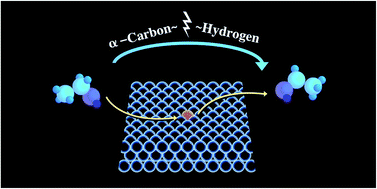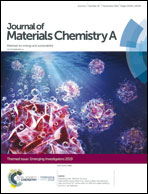Selectivity for ethanol partial oxidation: the unique chemistry of single-atom alloy catalysts on Au, Ag, and Cu(111)†
Abstract
Recently, we found that the atomic ensemble effect is the dominant effect influencing catalysis on surfaces alloyed with strong- and weak-binding elements, determining the activity and selectivity of many reactions on the alloy surface. In this study we design single-atom alloys that possess unique dehydrogenation selectivity towards ethanol (EtOH) partial oxidation, using knowledge of the alloying effects from density functional theory calculations. We found that doping of a strong-binding single-atom element (e.g., Ir, Pd, Pt, and Rh) into weak-binding inert close-packed substrates (e.g., Au, Ag, and Cu) leads to a highly active and selective initial dehydrogenation at the α-C–H site of adsorbed EtOH. We show that many of these stable single-atom alloy surfaces not only have tunable hydrogen binding, which allows for facile hydrogen desorption, but are also resistant to carbon coking. More importantly, we show that a rational design of the ensemble geometry can tune the selectivity of a catalytic reaction.

- This article is part of the themed collections: Journal of Materials Chemistry A Emerging Investigators and International Year of the Periodic Table : Single Atoms as Active Catalysts


 Please wait while we load your content...
Please wait while we load your content...